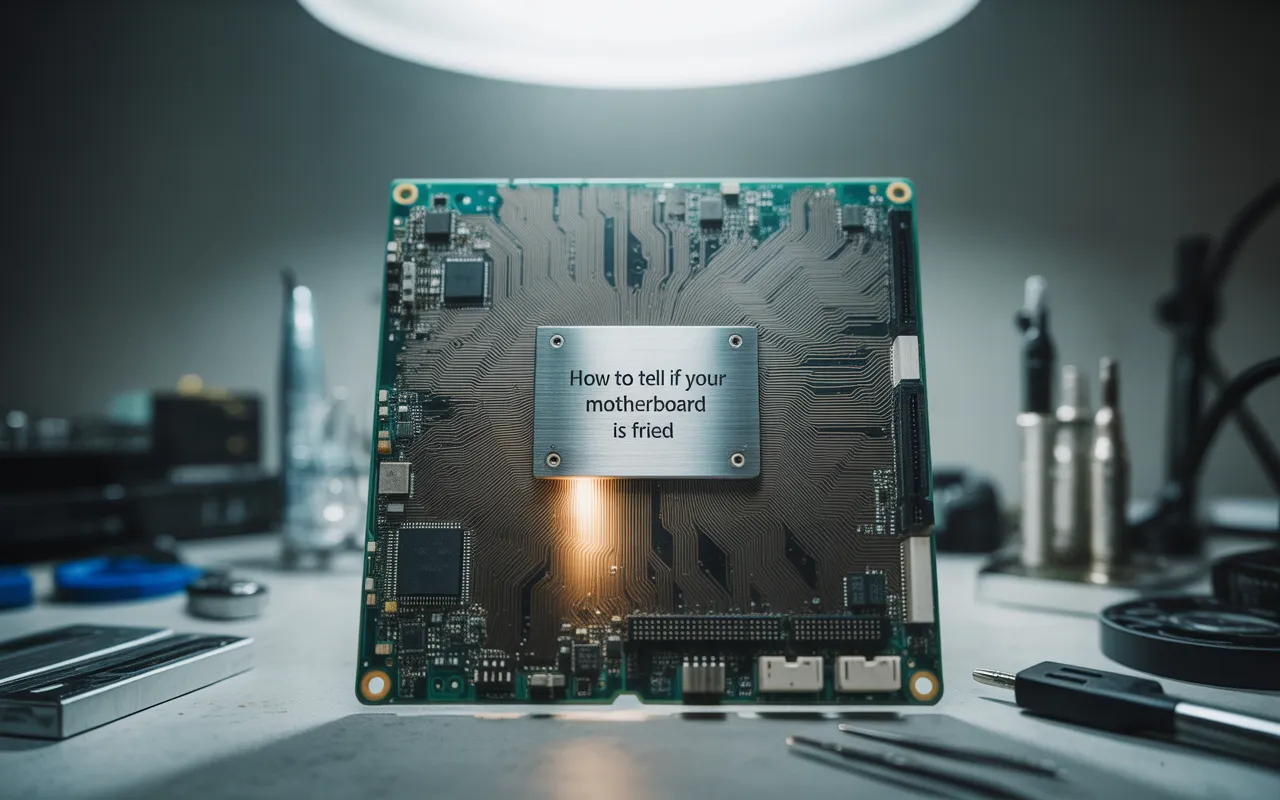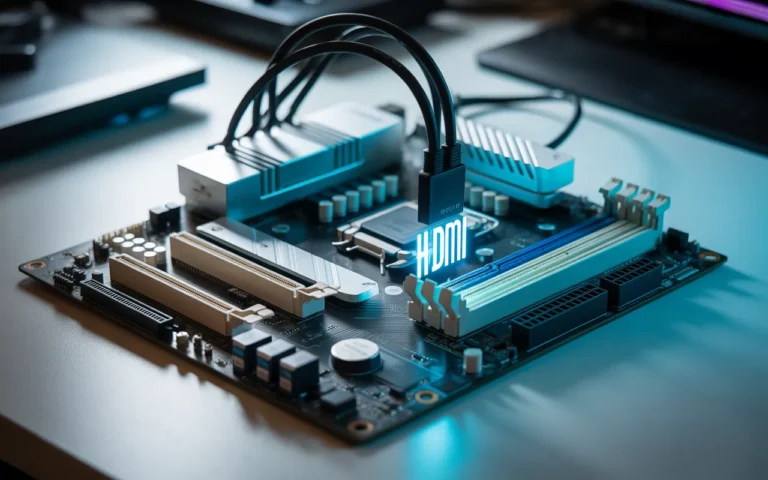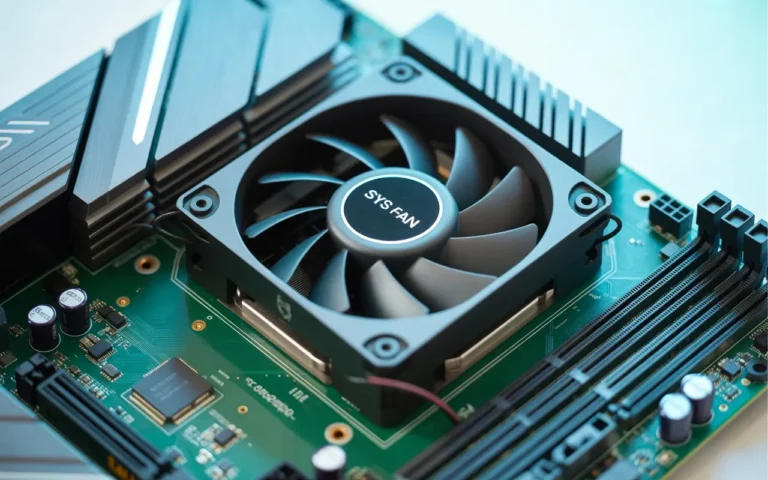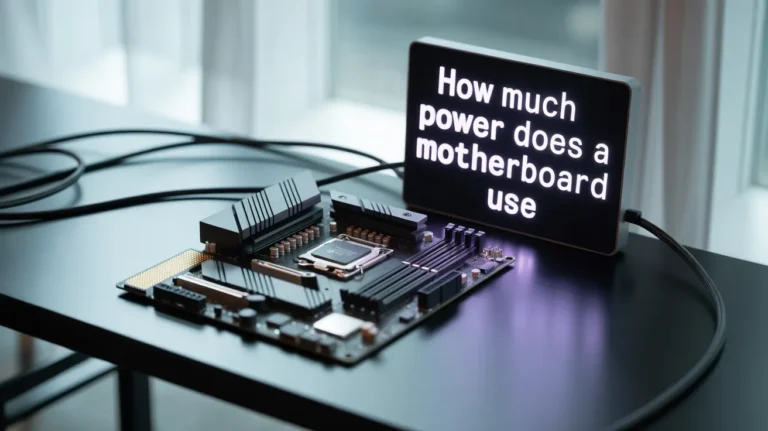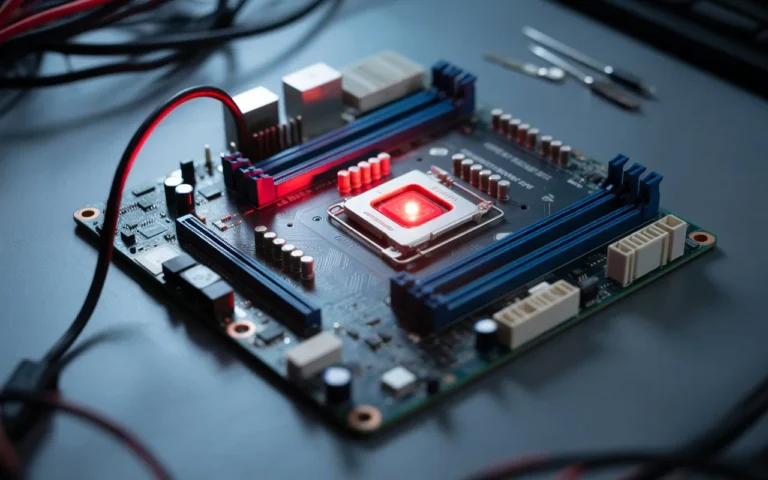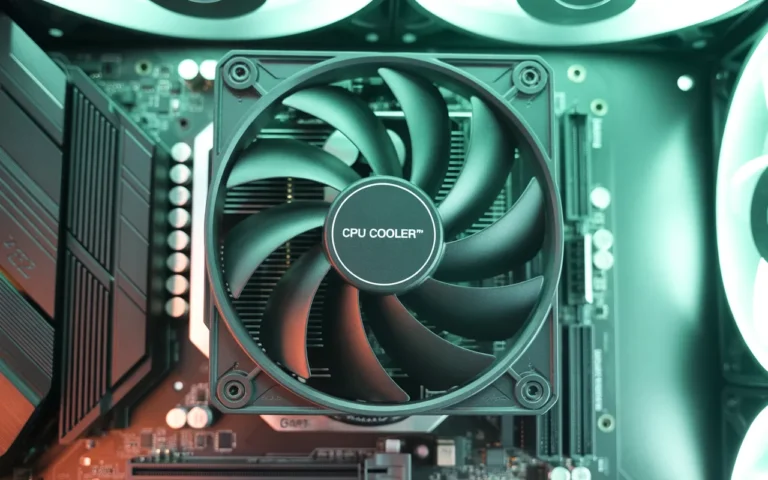How to Tell If Your Motherboard Is Fried – Expert Guide!
Introduction:
If your computer isn’t working right, it could be due to a fried motherboard. The motherboard is the heart of your computer, connecting all its parts. When it’s damaged, your computer may not start, freeze, or act oddly. So, how can you tell if your motherboard is fried? Keep an eye out for signs like the computer not turning on, shutting down randomly, or making strange beeping sounds. You might also notice burnt smells or visible damage like discolouration.
Wondering if it’s really your motherboard? Keep reading to find out how to tell for sure and what you can do next to fix it.
Signs Your Motherboard Might Be Fried:
If you’re questioning, ‘How do I know if my motherboard is fried?’ There are several signs you can look for. These are the motherboard failure symptoms you need to be aware of:
The Computer Won’t Power On:
This is one of the most obvious signs that your motherboard could be fried. If you press the power button and the computer remains completely unresponsive, the motherboard may have stopped receiving power or failed in some way. This can happen if the motherboard’s circuits or power connections are damaged.
No Display or Beeping Sounds:
A fried motherboard can cause your display to stay black, even if your computer is on. In many cases, when the motherboard malfunctions, the POST (Power-On Self-Test) process doesn’t complete, and you may hear the computer beeping error codes. These error codes correspond to various motherboard failures, including a damaged memory slot or processor failure.
Frequent Freezing and Crashing:
Your motherboard controls the communication between critical components. If it’s damaged, it can result in your computer constantly freezing or crashing, especially under stress. If this issue persists even after rebooting, it’s often an indication of underlying motherboard issues.
Unusual Smells or Burn Marks:
Sometimes, the most straightforward way to determine if your motherboard is fried is to physically inspect it. If you notice a burnt smell or see physical damage like burn marks on the motherboard, your motherboard has likely suffered electrical or thermal damage.
POST Error Codes or Lights:
Many motherboards come with diagnostic LEDs or POST error codes that light up or beep when a fault is detected. These codes can provide valuable clues, such as failure in specific hardware components, including RAM, CPU, or a completely failed motherboard.
How to Diagnose a Fried Motherboard:
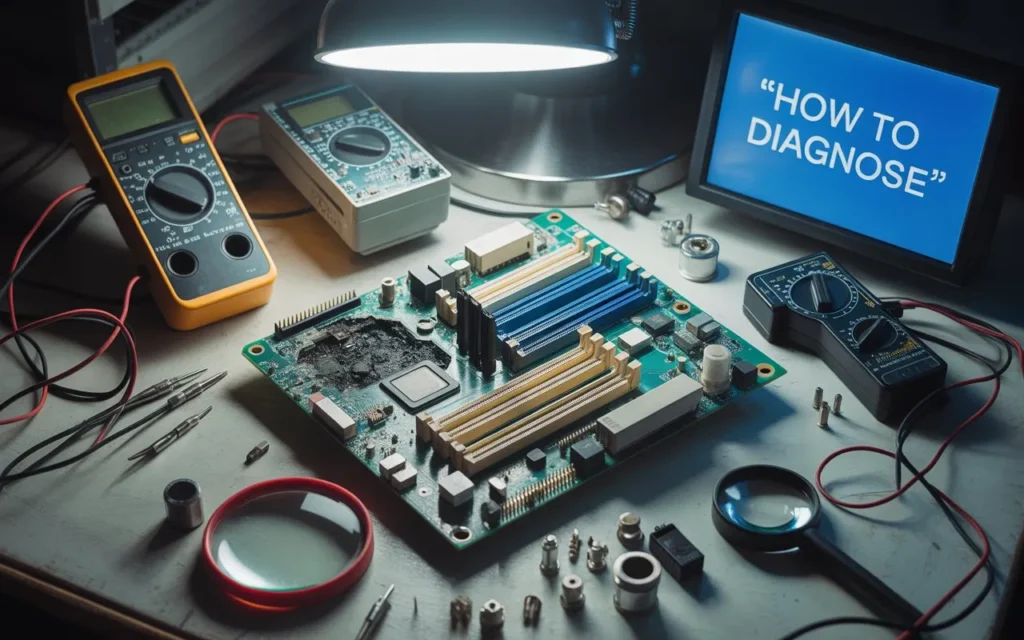
Diagnosing whether your motherboard is fried requires a careful, systematic approach. Let’s go through the steps you should follow:
Check the Power Supply:
Before assuming the motherboard is the issue, verify that your power supply is working correctly. If your computer isn’t powering on, it may be the power supply at fault. Using a power supply tester can help you confirm this before jumping to conclusions.
Test Other Components (RAM, CPU, GPU):
Testing your other components, like the CPU, RAM, and GPU, in a working system can help you rule out individual parts. If these components function correctly in another computer, then the problem is likely with the motherboard.
Inspect for Physical Damage:
Look closely at your motherboard for visible signs of damage, such as broken capacitors, burn marks, or even cracks. If you find any, you’re likely dealing with a fried motherboard.
Run Diagnostic Software:
Diagnostic tools like MemTest for RAM or the POST tester for motherboard health can help you get more specific data about what’s failing. Motherboard diagnostic tools can also be used to run deeper tests and pinpoint the exact issue.
Swap with a Known Working Motherboard:
Try swapping out the suspected motherboard with a working one. If the issue resolves, you’ve confirmed the motherboard is the problem.
Also Read: How to Fix Bent Pins on a Motherboard – Full Guide 2025!
What Causes a Motherboard to Get Fried?
Understanding what causes motherboard failure can help you take steps to prevent it. Let’s break down the most common reasons behind a fried motherboard:
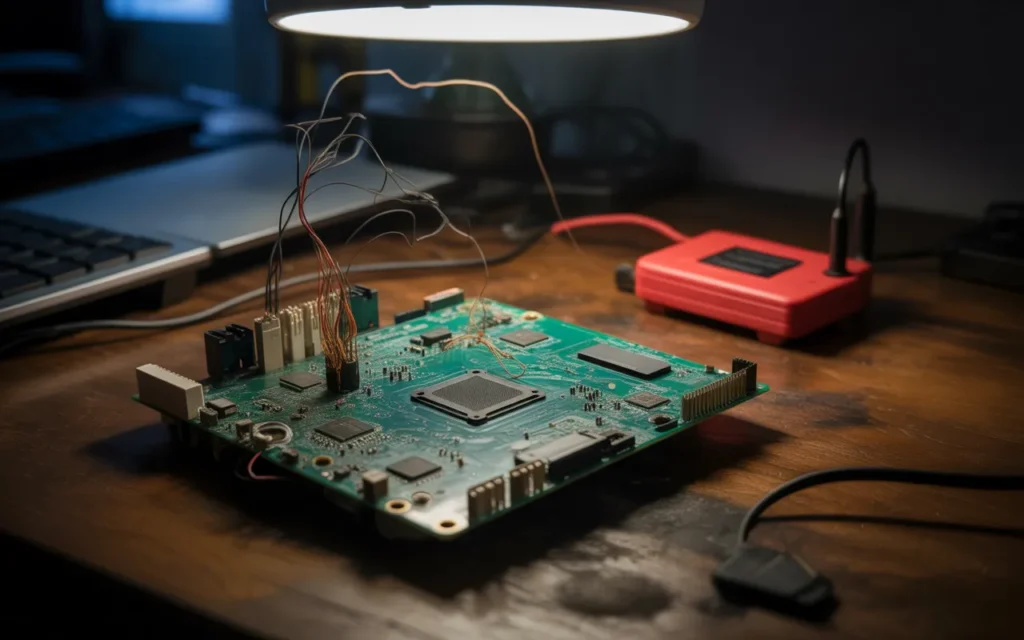
Electrical Surges and Power Spikes:
Electrical surge damage is a common culprit. Surges from lightning, power outages, or faulty wiring can overwhelm your motherboard’s delicate circuits. Investing in a surge protector can help prevent this.
Overheating:
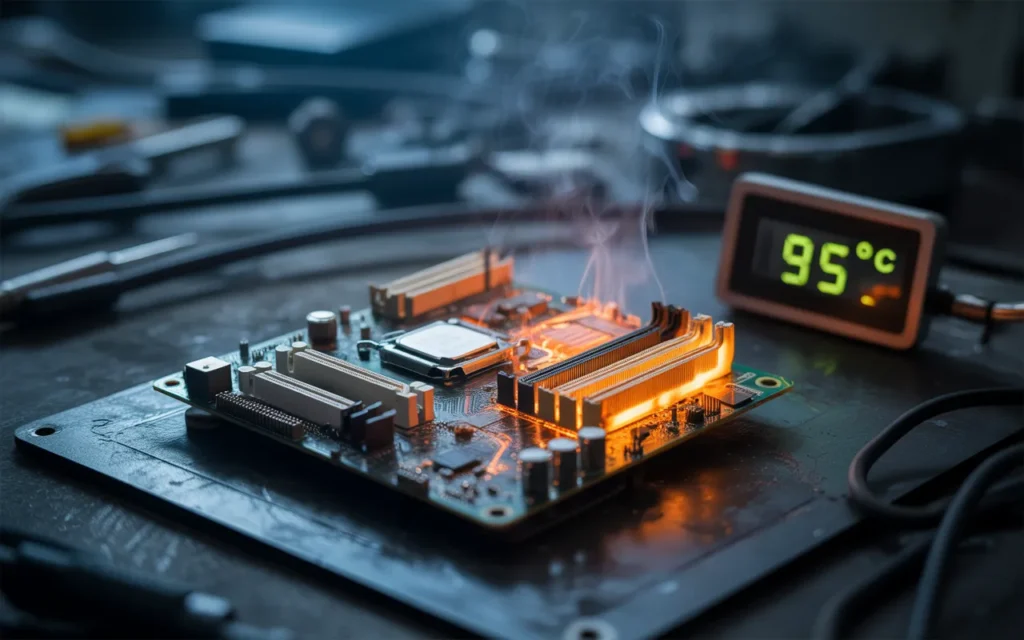
Your motherboard is vulnerable to overheating due to several causes. If your cooling system fails or you overclock your CPU without proper cooling, the excessive heat can damage your motherboard permanently. Ensure your system is well-ventilated and that fans are working correctly.
Faulty BIOS/UEFI:
A faulty BIOS can render your motherboard unstable. BIOS is the firmware that helps your computer start up and communicate with hardware. If the BIOS becomes corrupted or outdated, it can lead to motherboard failure.
Physical Damage:
Physical impacts, such as dropping the computer or mishandling internal components, can cause PC motherboard damage. A small jolt can break connectors or, worse, crack the motherboard’s PCB (printed circuit board).
Poor Quality Components:
Using low-quality parts like cheap power supplies or outdated RAM can increase the risk of motherboard failure. These components can cause motherboard power issues and weaken the motherboard’s ability to handle electrical load.
How to Prevent Motherboard Damage in the Future:
Now that we know the causes, let’s focus on prevention. These steps will help you keep your motherboard healthy and extend the lifespan of your system.
Use a Surge Protector:
Using a surge protector or UPS (Uninterruptible Power Supply) can protect your motherboard from sudden spikes in power, which can fry the components.
Keep the System Cool:
Regularly clean your fans and ensure proper airflow within your case. Install additional cooling if necessary. Overheating of the motherboard can easily be avoided with a well-maintained cooling system.
Avoid Overclocking Without Proper Cooling:
Overclocking a motherboard risks failure if the system overheats. If you plan to overclock, ensure you have advanced cooling systems like liquid cooling to prevent thermal damage.
Update BIOS Regularly:
A faulty BIOS is one of the many reasons a motherboard can fail. Make sure to regularly update your BIOS to ensure compatibility with newer components and improve stability.
Invest in Quality Components:
Using high-quality parts like a reliable power supply and properly rated RAM will ensure your motherboard isn’t under unnecessary stress. This will also reduce the risk of motherboard power issues.
Solutions if Your Motherboard Is Fried:
If your motherboard is indeed fried, there are a few solutions available.
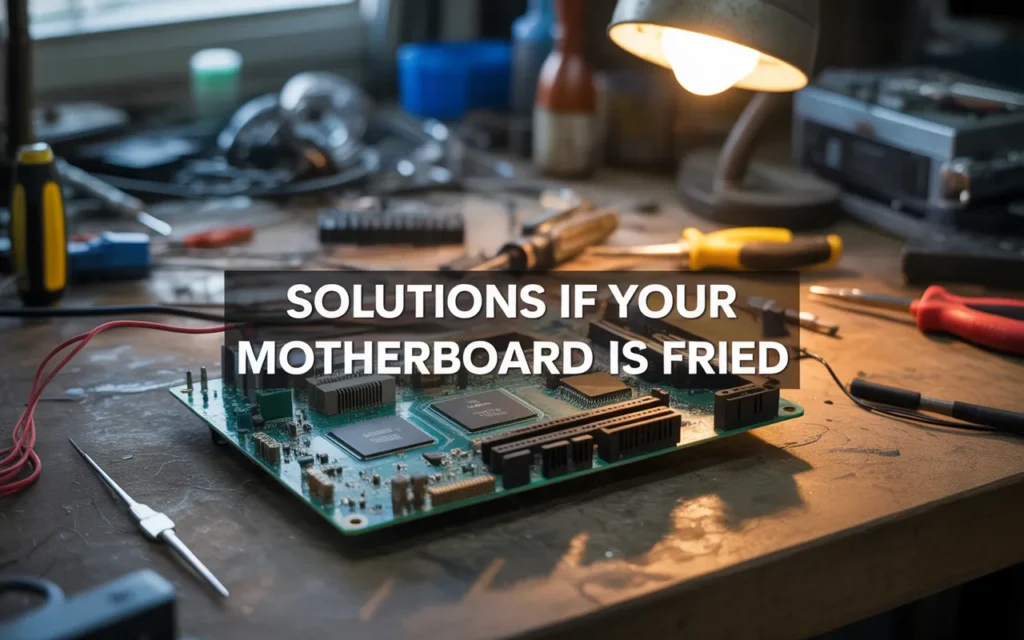
Motherboard Repair or Replacement:
In many cases, replacing the motherboard is the most practical solution. Motherboard repair or replacement can be costly, but it’s necessary to restore your system to working order. If the damage is minor, some professionals can repair specific components like capacitors.
DIY Fixes:
For those with technical expertise, minor repairs can be made, like reflowing damaged solder joints or replacing blown capacitors. However, these repairs are risky and should only be attempted by someone experienced.
Seek Professional Help:
If the damage is severe, it’s best to seek professional help. A certified technician will be able to quickly assess the situation and either repair the motherboard or recommend a replacement.
More Read: What Is an ITX Motherboard? – A Compact Solution 2025!
When to Seek Professional Help:
Sometimes, motherboard repair or replacement can be complex. Here are signs that it’s best to call in a professional:
Serious Physical Damage:
If the motherboard shows significant physical damage, such as a cracked PCB or burnt components, it’s unlikely a DIY fix will work.
Electrical Damage:
Electrical issues, such as electrical surge damage, can be challenging to assess and repair on your own. In these cases, a professional will be able to determine if any components can be salvaged or if replacement is necessary.
Advanced Diagnostics:
Technicians have access to advanced diagnostic tools like POST testers and oscilloscopes, which can provide a more accurate analysis of the motherboard’s health.
Conclusion:
A fried motherboard can bring your system to a halt, but with the proper knowledge, you can quickly diagnose the issue and take the appropriate steps to fix it. Recognising the motherboard failure symptoms early is key to preventing more extensive damage. Whether you choose to repair it yourself or consult a professional, understanding the causes and solutions for motherboard damage can save you time and money.
FAQs:
How can I tell if my motherboard is damaged?
If your computer won’t power on, has no display, or shows strange beeping sounds, it could be a sign of a fried motherboard.
Can I repair a fried motherboard myself?
Minor repairs like replacing capacitors might be possible if you have experience, but motherboard repair is often best left to professionals.
What causes motherboard failure?
Common causes include overheating, electrical surges, faulty BIOS, and poor-quality components.
How to fix the motherboard overheating?
Ensure proper cooling, clean dust from fans, and consider upgrading your cooling system to prevent overheating, which can damage the motherboard.
When should I replace my motherboard?
Replace your motherboard when it shows physical damage, frequent system crashes, or when repairs are too costly.

